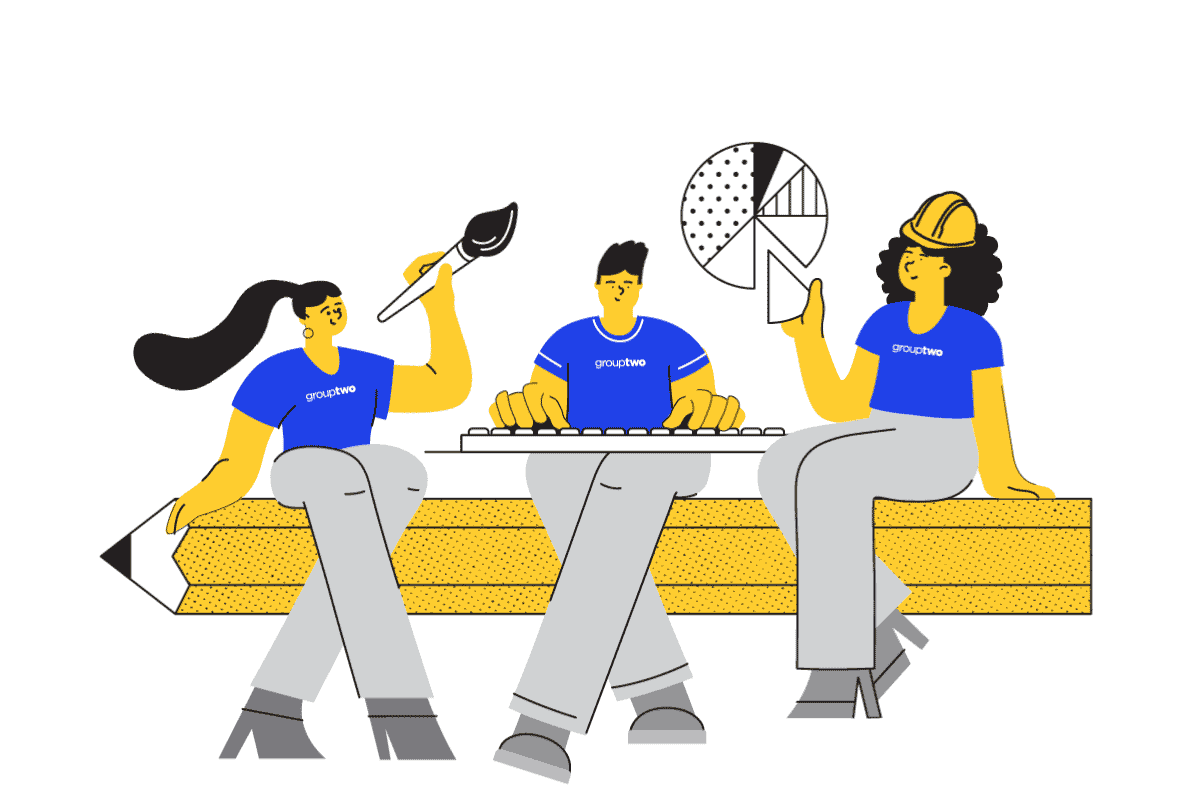It’s impossible to hide our team culture at group two. It’s who we are, how we work together, and a huge part of how we connect with and work with our builders. This past week, Mollie spoke at The International Builders’ Show in Las Vegas about this very topic, and how your internal culture IS affecting your customer experience and sales.
In the past few years, Mollie has been studying the connection and parallels between the internal team experience and external customer experience. When it comes down to it… it’s all about PEOPLE. The people in our organizations are powerful. They have the power to directly affect the daily experience of both their co-workers and customers. Instead of ignoring this, builders have an opportunity to embrace the importance of team culture and not only cultivate it, but measure it on a regular basis.

The Relevance of Culture in Homebuilding
The concept of “culture” can be explained in many different ways, but at its core, it’s the set of customs, traditions, and values of a community. And of course, that speaks to all of us because it’s what builders think about and do every single day. You build communities for a living!
Yet, the most important community of all, your very own internal community, is often thought of last, or not at all. When your team feels safe, valued, and empowered within your company — and aligned with your mission and vision — they’re naturally more motivated to not only do better work, but to believe in their work.
If you are doubtful about the positive results that your culture can have on the bottom line, consider this… Engaged team members perform 20% better. That’s a number that cannot be ignored. When Mollie asked attendees how many of them would like a 20% increase in productivity, it’s no surprise that there was not a single person who did not raise their hand.
Establishing Your Culture
As we inch further into the technological age, it’s crucial to remember that tech is best used to enhance the human experience and connect with your buyers. Your team is your greatest asset when your culture is strong. Because your team is made up of people that you choose, their attitude and work ethic is a direct product of the company’s values. And it can’t be bought — it has to be built.
Start by observing. Really take in what your current work environment is like. Are people happy? Do they enjoy the challenges in their workday, and the product and services they are directly accountable for? To truly identify your potential for a stronger team, it’s invaluable to see where you are missing the mark before you can effectively move forward.
Next, you will want to define who you want to be. Put your values and your vision moving forward on paper. A mission statement is more than a promise to the buyer. It’s a promise to your team. As one of our favorite authors Simon Sinek says, “Customers won’t love your company until your team does.” Once you have a mission on paper, you can use it during every step of your hiring process to ensure that anyone you add to the team fits your culture from day one.
A defined mission not only sets employees up to succeed, it makes it easy to determine who’s a fit for the organization and who is not. It’s never about if the person is nice or likeable, and always about if they live and breathe the mission that has been established. Hiring the right team to match your culture and meet your mission is easily the most significant difference between a team that works and a team that doesn’t.

Communicating Your Culture Through Marketing
Now that you have established your mission, let’s bring it to life! First, you need to think about words that describe your company voice. Are you formal? Are you informal? Are you professional? Are you relaxed? Putting these simple words on paper will keep your entire team aligned and sure that they are representing your organization positively in all interactions. This voice affects everything from your emails to your website and sales process.
And because 90% of information transmitted to the brain is visual, a mood board, which combines your internal culture with what you do for people through curated images, is an effective way to visually express your company voice for your internal team and your buyers. A mood board is also an incredible piece to refer back to in terms of what makes your services special and valuable. When your team has something visual to refer to, they can live and breathe your brand voice, and represent your company authentically.
Mollie always says: “Marketing is everything that leaves an impression about your company.” Whether it’s how a sales consultant conducts an information session or trash accidentally left in a model home, people are observing and processing who you are at all times. And there is just no simpler way to say it… Great people = great culture.

